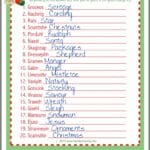Unleash your inner word game champion with this comprehensive guide to conquering Wordle and Scrabble. From strategic starting words to advanced tile placement and letter frequency analysis, we’ll equip you with the tools to boost your scores and outperform your opponents. Need help finding words with specific letters? Check out this helpful resource: word finder tool.
Wordle Mastery: Strategic Starts and Personalized Analysis
Your Wordle journey begins with the perfect starting word. While popular choices like “CRANE” or “SLATE” offer a balanced mix of common vowels and consonants, maximizing the chances of uncovering key letters, a truly effective strategy goes beyond the conventional. How can you tailor your approach to achieve consistent Wordle wins?
Crafting Your Personalized Wordle Strategy
The key to Wordle mastery lies in personalization. Experiment with diverse vowel and consonant combinations. Track your successes and failures using a simple notebook or spreadsheet. Analyze your results: Did “S” starters reveal more letters on average? Do you consistently guess words with “E” in the second position? Did focusing on less common letters, like “U” or “Y”, lead to quicker wins?
This personalized approach transforms you from a casual player to a strategic Wordle whiz. It’s about discovering your winning formula.
Scrabble Supremacy: Maximizing Points with Strategic Play
Scrabble is a game of skill, not just vocabulary. Strategic letter placement, bonus square utilization, and opponent awareness are your keys to victory.
Scrabble Strategies for High-Scoring Word Combinations
Premium Tile Management: High-value tiles (Q, Z, X, J) are your secret weapons. Save them for opportunities to capitalize on double or triple letter/word scores. A strategically placed “Q” on a triple letter score can swing the game in your favor.
Strategic Tile Assessment: Before each turn, carefully evaluate your rack. Explore all possible high-scoring combinations. Patience is key: sometimes, foregoing a lower-scoring play opens the door to a much higher-scoring opportunity in subsequent turns. Consider how your play might set up future moves, especially if it allows you to utilize bonus squares.
Opponent Analysis: Pay close attention to your opponent’s moves and tile usage. Are they accumulating vowels or consonants? Use this knowledge to your advantage. Blocking their access to premium squares or limiting their vowel/consonant options can disrupt their strategy and enhance your own.
Bonus Square Mastery: Double and triple letter/word scores are game-changers. Prioritize these spaces whenever possible. A simple word placed strategically on a bonus square can easily outscore a longer word played carelessly. Even if you don’t have a premium tile, using common letters to build upon existing words on double or triple letter scores can significantly boost your score.
| Letter Combination | Potential Word | Possible Score (Example) | Strategy Highlight |
|---|---|---|---|
| A, R, T, S, E | STARES | 12 (without bonus squares) | Common letters allow for flexible placement and word building potential. Can be combined with existing letters on the board for higher scores. |
| Q, U, I, T, E | QUITE | 22 (using a triple letter score for Q) | High-value letter (Q) maximized with bonus square. Even without other bonus squares, the strategic placement of “Q” significantly increases the score. |
| A, R, T, S | ARTS | 7 (placed on double word score) | While not the highest scoring word, placing this common combination on a double word score significantly increases its value. |
Continuous Game Refinement: Analyzing Your Performance
Consistent analysis is the bedrock of improvement in any game. After each Wordle or Scrabble match, take time to reflect on your performance. What strategies worked? Where did you fall short? Which starting words led to quicker Wordle wins? Did taking risks in Scrabble pay off?
Key Takeaways for Continuous Improvement
Detailed Record Keeping: Maintain a game log, noting Wordle starting words, letter hints, Scrabble tile combinations, and final scores. This data reveals patterns and informs future strategies. Consistent tracking transforms guesswork into informed decisions.
Letter Frequency Awareness: Familiarize yourself with letter frequency distributions in both Wordle and Scrabble. Prioritizing common letters (E, A, R, T, O, L, I, S, N) in your Wordle starting words increases your chances of uncovering crucial letters early. In Scrabble, knowing which letters appear most frequently can help you predict potential word plays and manage your rack effectively.
Strategic Experimentation: Don’t be afraid to deviate from conventional wisdom. Experiment with different Wordle starting words and Scrabble tile combinations. You might uncover a unique tactic that gives you a competitive edge. Analyzing the results of your experiments will help you refine your approach and develop innovative strategies.
Advanced Techniques: Elevating Your Word Game Prowess
Taking your Wordle and Scrabble skills to the next level requires delving into advanced techniques.
Wordle: Leveraging Letter Frequency and Positional Probability
Wordle isn’t purely random. Understanding letter frequency is crucial, but positional probability adds another layer of strategy. Certain letters are more likely to appear in specific positions within a word. For example, “S” is often found at the beginning or end, while “E” is frequently the second or fourth letter. Combining letter frequency with positional probability allows you to make more educated guesses.
Scrabble: Mastering Bingo Stems and Defensive Play
In Scrabble, understanding bingo stems – six-letter combinations that can be extended to seven-letter words by adding a single tile – is essential for maximizing scores. Effective rack management, balancing vowels and consonants, and tile tracking are crucial skills. Defensive strategies, like blocking your opponent’s access to premium squares or playing words that limit their options, can be as important as offensive play.
By integrating these strategies and continuously analyzing your performance, you’ll transform from a casual player into a strategic word game master. Embrace the challenge, and savor the thrill of victory!
- Unlock Water’s Symbolism: A Cross-Cultural Exploration - April 20, 2025
- Identify Black and White Snakes: Venomous or Harmless? - April 20, 2025
- Unlocking Potential: Origins High School’s NYC Story - April 20, 2025












